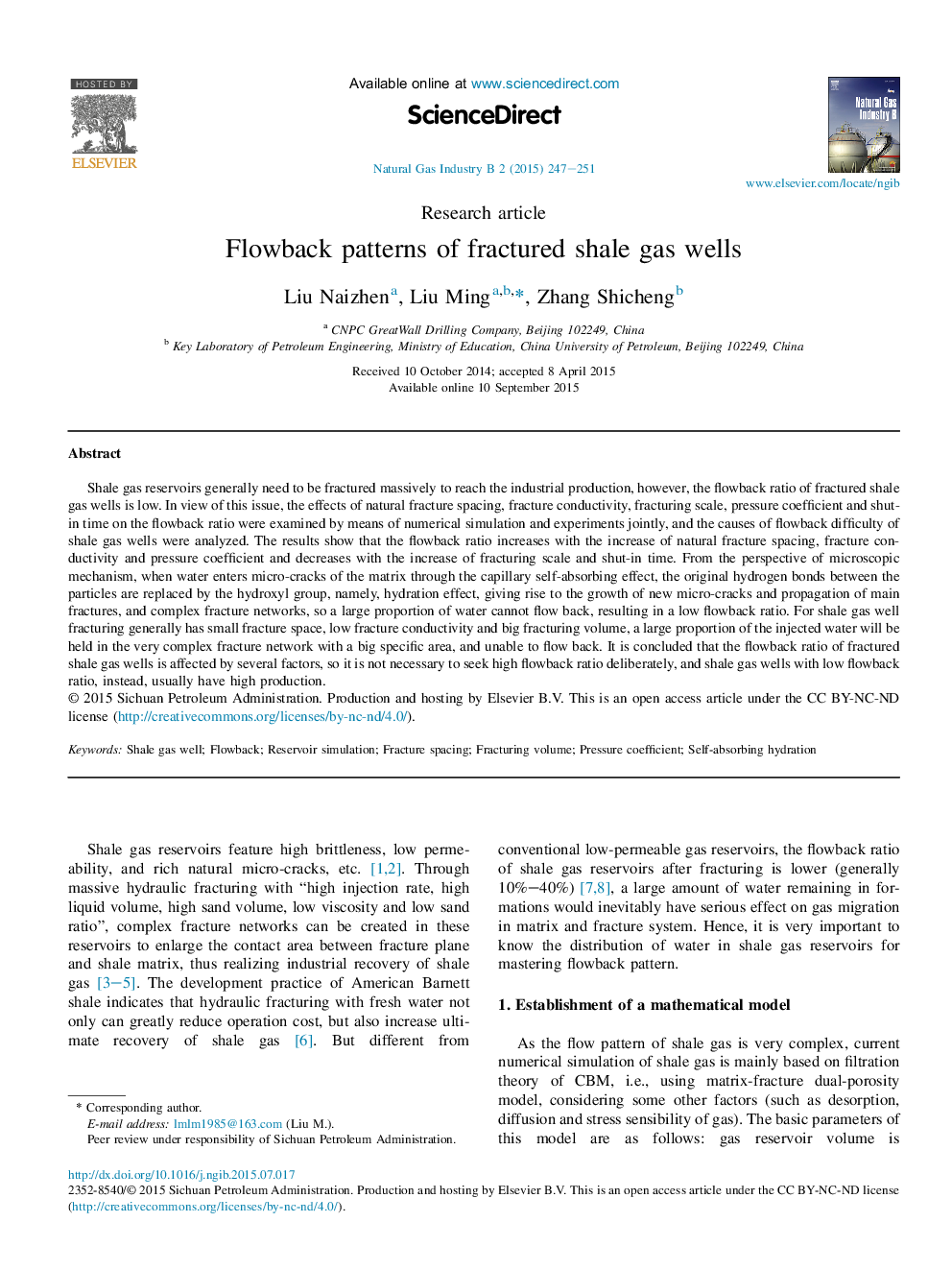| Article ID | Journal | Published Year | Pages | File Type |
|---|---|---|---|---|
| 1747786 | Natural Gas Industry B | 2015 | 5 Pages |
Shale gas reservoirs generally need to be fractured massively to reach the industrial production, however, the flowback ratio of fractured shale gas wells is low. In view of this issue, the effects of natural fracture spacing, fracture conductivity, fracturing scale, pressure coefficient and shut-in time on the flowback ratio were examined by means of numerical simulation and experiments jointly, and the causes of flowback difficulty of shale gas wells were analyzed. The results show that the flowback ratio increases with the increase of natural fracture spacing, fracture conductivity and pressure coefficient and decreases with the increase of fracturing scale and shut-in time. From the perspective of microscopic mechanism, when water enters micro-cracks of the matrix through the capillary self-absorbing effect, the original hydrogen bonds between the particles are replaced by the hydroxyl group, namely, hydration effect, giving rise to the growth of new micro-cracks and propagation of main fractures, and complex fracture networks, so a large proportion of water cannot flow back, resulting in a low flowback ratio. For shale gas well fracturing generally has small fracture space, low fracture conductivity and big fracturing volume, a large proportion of the injected water will be held in the very complex fracture network with a big specific area, and unable to flow back. It is concluded that the flowback ratio of fractured shale gas wells is affected by several factors, so it is not necessary to seek high flowback ratio deliberately, and shale gas wells with low flowback ratio, instead, usually have high production.
